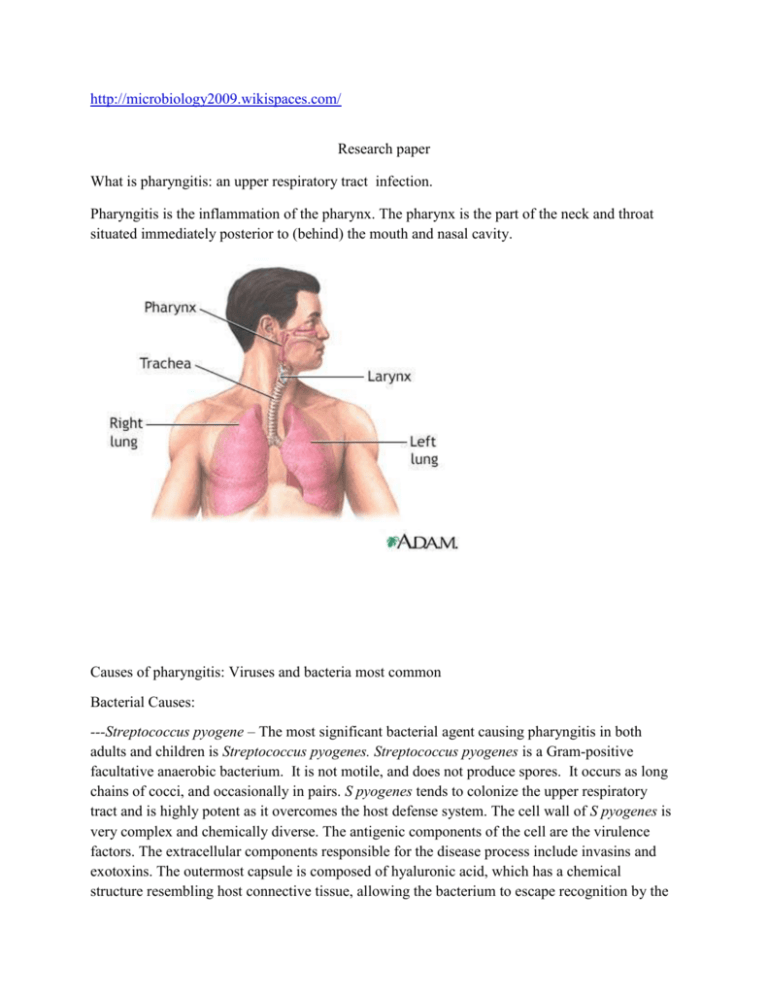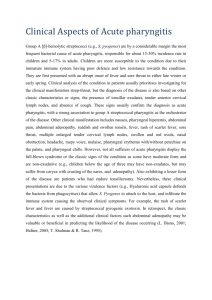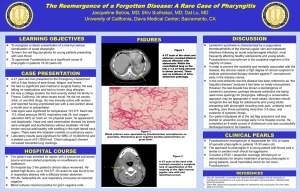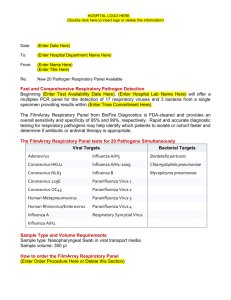Research paper for micro may 15, 2010
advertisement

http://microbiology2009.wikispaces.com/ Research paper What is pharyngitis: an upper respiratory tract infection. Pharyngitis is the inflammation of the pharynx. The pharynx is the part of the neck and throat situated immediately posterior to (behind) the mouth and nasal cavity. Causes of pharyngitis: Viruses and bacteria most common Bacterial Causes: ---Streptococcus pyogene – The most significant bacterial agent causing pharyngitis in both adults and children is Streptococcus pyogenes. Streptococcus pyogenes is a Gram-positive facultative anaerobic bacterium. It is not motile, and does not produce spores. It occurs as long chains of cocci, and occasionally in pairs. S pyogenes tends to colonize the upper respiratory tract and is highly potent as it overcomes the host defense system. The cell wall of S pyogenes is very complex and chemically diverse. The antigenic components of the cell are the virulence factors. The extracellular components responsible for the disease process include invasins and exotoxins. The outermost capsule is composed of hyaluronic acid, which has a chemical structure resembling host connective tissue, allowing the bacterium to escape recognition by the host as an offending agent. Thus, the bacterium escapes phagocytosis by neutrophils or macrophages, allowing it to colonize. Other bacterial causes: ----Arcanobacterium haemolyticus -----M pneumonia ------C pneumonia -----Neisseria gonorrhoeae- Very rarely does it cause pharyngitis but there have been some cases in which it has done so. The reason I mention this is because it is one of the aerobic, gram negative bacteria we learned in chapter 11. Viral Causes: Most common viruses that cause pharyngitis are rhinovirus and coronavirus. Rhinovirus: Rhinoviruses are positive strand RNA viruses with a naked nucleocapsid. They are sensitive to low pH and are spread by aerosols and infect the upper respiratory track. Rhinoviruses are quite stable, lasting for hours on fomites, but are sensitive to temperature. Since they are sensitive to temperature they do not spread to the lower respiratory tract because they replicate best at a few degrees below normal body temperature. Coronavirus: were first isolated from chickens in 1937. They are the largest positive strand RNA viruses. They infect humans and animals in which they cause respiratory infections such as pharyngitis. Most people harbor anti-coronavirus antibodies but reinfection is common indicating that there are many circulating serotypes of the virus in the human population. Most coronavirus infections go undiagnosed and the disease is self-limiting. Diagnosis can be carried out using immuno-electron microscopy and serology. There are no anti-virals for routine coronavirus infections but over-the-counter remedies to alleviate symptoms are useful.











